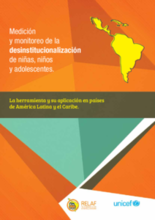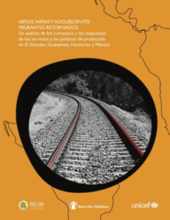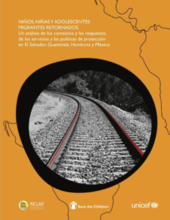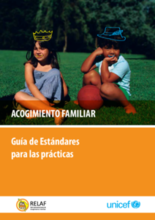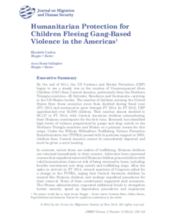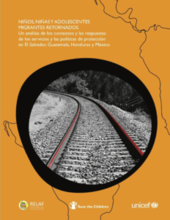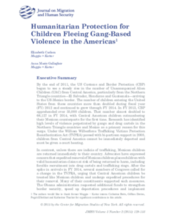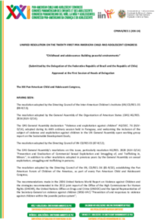Displaying 311 - 320 of 378
Este taller está diseñado para entrenar los expertos técnicos en los valores y principios básicos involucrados en la labor del trabajo de Protección de Niñez y Adolescencia.
El objetivo del estudio es presentar el proceso de construcción de una herramienta para medir la institucionalización en forma rápida, a partir de información existente en los países y mostrar los principales datos que se obtuvieron.
Esta evaluación rápida busca cubrir la escasez de información sobre las políticas y los servicios de las entidades gubernamentales y no gubernamentales encargadas de la protección de los derechos de niños, niñas y adolescentes migrantes retornados a sus sociedades de origen en los países del Triángulo del Norte y México, con un foco en las acciones tendientes a restituir el derecho a la convivencia familiar y la integración comunitaria.
Entre 2013 y 2014, aumentó de manera considerable el número de niños, niñas y adolescentes no acompañados que migran desde los países de América Central hacia México y los Estados Unidos (EU).
This article discusses the effect of international migration on the accumulation of human capital among Mexican youths aged 15–18 who are left behind.
Esta Guía, escrito en español, es una herramienta diseñada para colaboración con profesionales quienes trabajan en la implementación y manejo de programas de acogimiento familiar en América Latina.
This paper provides an overview of the violence perpetrated by gangs and other criminal organizations in Mexico and Central America which compels many children to flee their communities. The paper also describes the US government’s obligations to protect unaccompanied children upon arrival, and good practices of other governments relating to the protection of child migrants and refugees.
Esta evaluación rápida, conducida por RELAF in colaboración con Save the Children y UNICEF, revisa las políticas públicas y servicios desarrollados por instituciones gubernamentales y no-gubernamentales perteneciendo al "Sistema de Protección Integral" para hacer frente a las cuestiones problemáticas que afectan los niños migrantes y sus familias en el Triángulo del Norte (El Salvador, Guatemala, y Honduras) y México.
This paper provides an overview of the violence perpetrated by gangs and other criminal organizations in Mexico and Central America which compels many children to flee their communities. The paper also describes the US government’s obligations to protect unaccompanied children upon arrival, and good practices of other governments relating to the protection of child migrants and refugees.
This Unified Resolution from the Twenty-First Pan-American Child and Adolescent Congress highlights resolutions and recommendations relevant to violence against children, recognizes achievements made by Member States in addressing violence against children, and presents 17 specific resolutions related to ending and preventing violence against children in the Americas.

